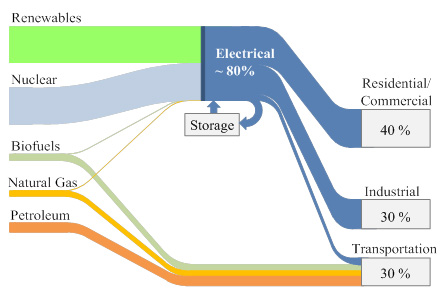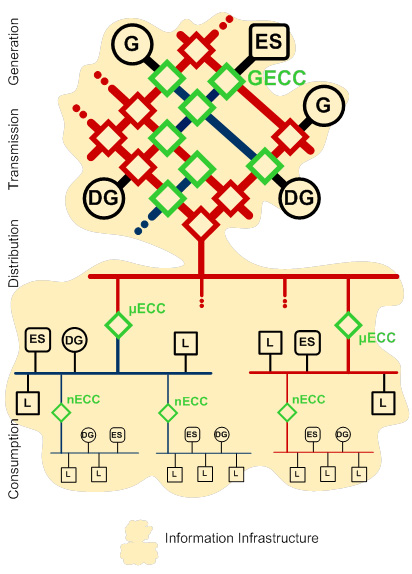LIBRARY
Intergrid: A Future Electronic Energy Network?

It is quite imaginable that in the future, energy flow could be represented in the way shown in Fig. 1. Compared to today's scenario, there could be greater utilization of renewable and nuclear energy, with highly reduced engagement of biofuels, natural gas and petroleum. This possible scenario could be expected in 10, 20, or 30 years from now, and it would require electric energy infrastructure that is a double of today's in size and capacity.
To address this problem, it is then necessary to consider that the architectural concept of the future grid could consist of a number of semi-autonomous nanogrids with nanogrid Energy Control Centers (nECC) combined to form a bigger microgrid system, which in turn is interfaced to a higher-level distribution through a substation µECC, and so on, as shown in Fig. 2. The resulting system is a hybrid mix of ac and dc architectures comprising, pico-, nano-, micro-, and sub-grids that are dynamically decoupled and hierarchically interconnected to form a novel electric power grid structure: the intergrid.























































































